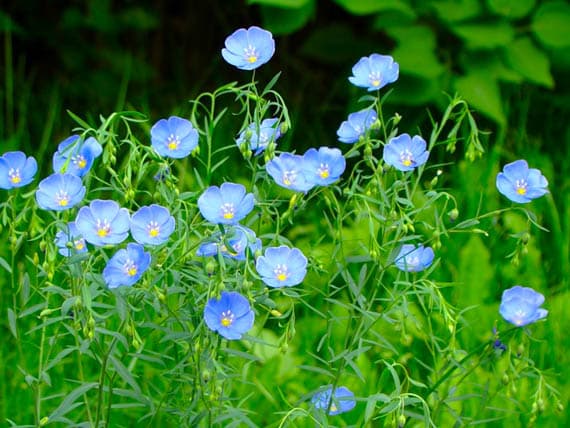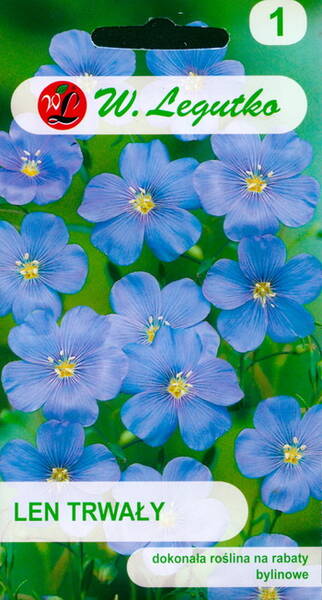Delicate, surprisingly beautiful plant, especially when grown in massifs.
Thin and numerous stems are crowned with sky-blue flowers up to 3.0 cm in diameter, which sway from the slightest breath of wind ...
Prefers open, sunny places with well-drained fertile soil. Used for mixborders, rocky gardens, rock gardens.
Perfectly combined in joint landings with bright summer houses. Blooms in the second year.

Blue flax, Perennial flax. Bot. syn.: Linum sibiricum.
* Flax stems are thin, numerous and gracefully curving. The flowers are pale blue, light blue and 2.0–3.0 cm in diameter.
Prefers a sunny location, well-drained and fertilized soil. Blooms in June - July. Perennial flax is propagated by seeds or division of the bush.
The life of a flax flower is short: only one day, but there are always new buds on the way...
Watching the flowers, you can see that they always open and close at a certain time: flax wakes up at 6 o'clock in the morning, and falls asleep at 16-17 o'clock (however, you can only determine the time in sunny weather, because in cloudy weather flax flowers do not open at all).
Thin stems and delicate flowers of flax cannot withstand the onslaught of strong wind and rain, so when the plant grows up, it must be tied to pegs.
Flax plantings look great with such delicate and modest plants as: gypsophila, centaurea, eschscholzia, nasturtium, dimorphoteca.
It is possible to plant flax both in large groups in discounts and mixborders, and in single-species plantings on the lawn. Then the abundance of these modest and unpretentious flowers, fluttering in the wind, is a delightful sight!












